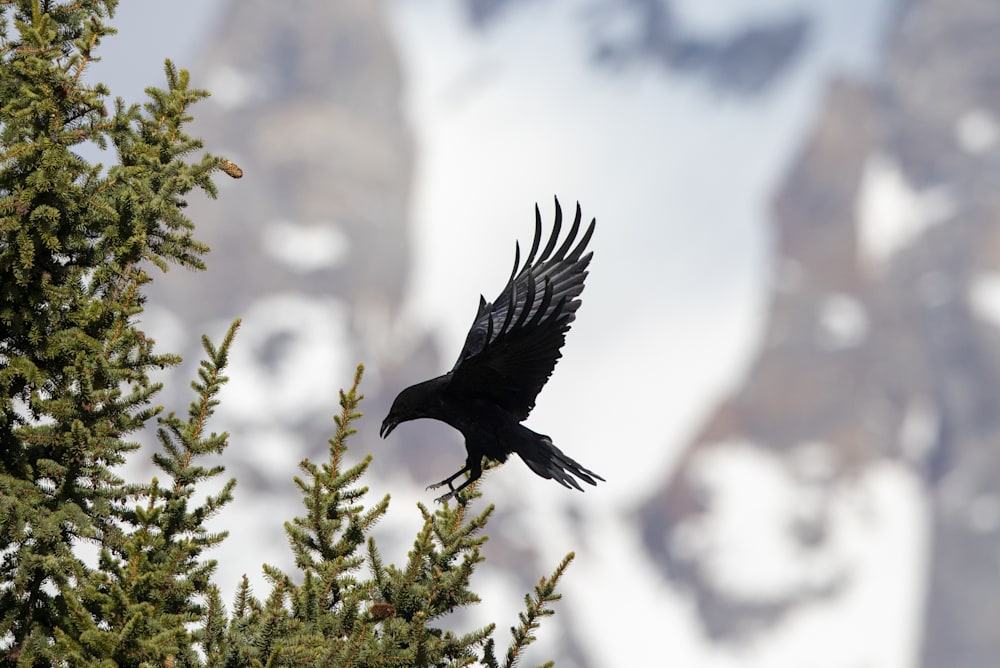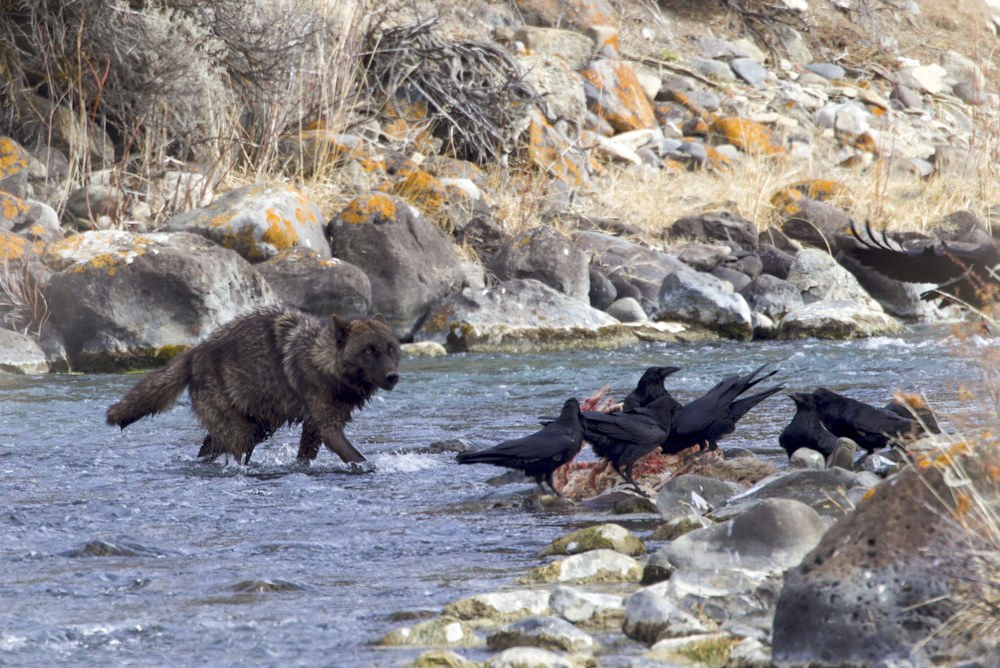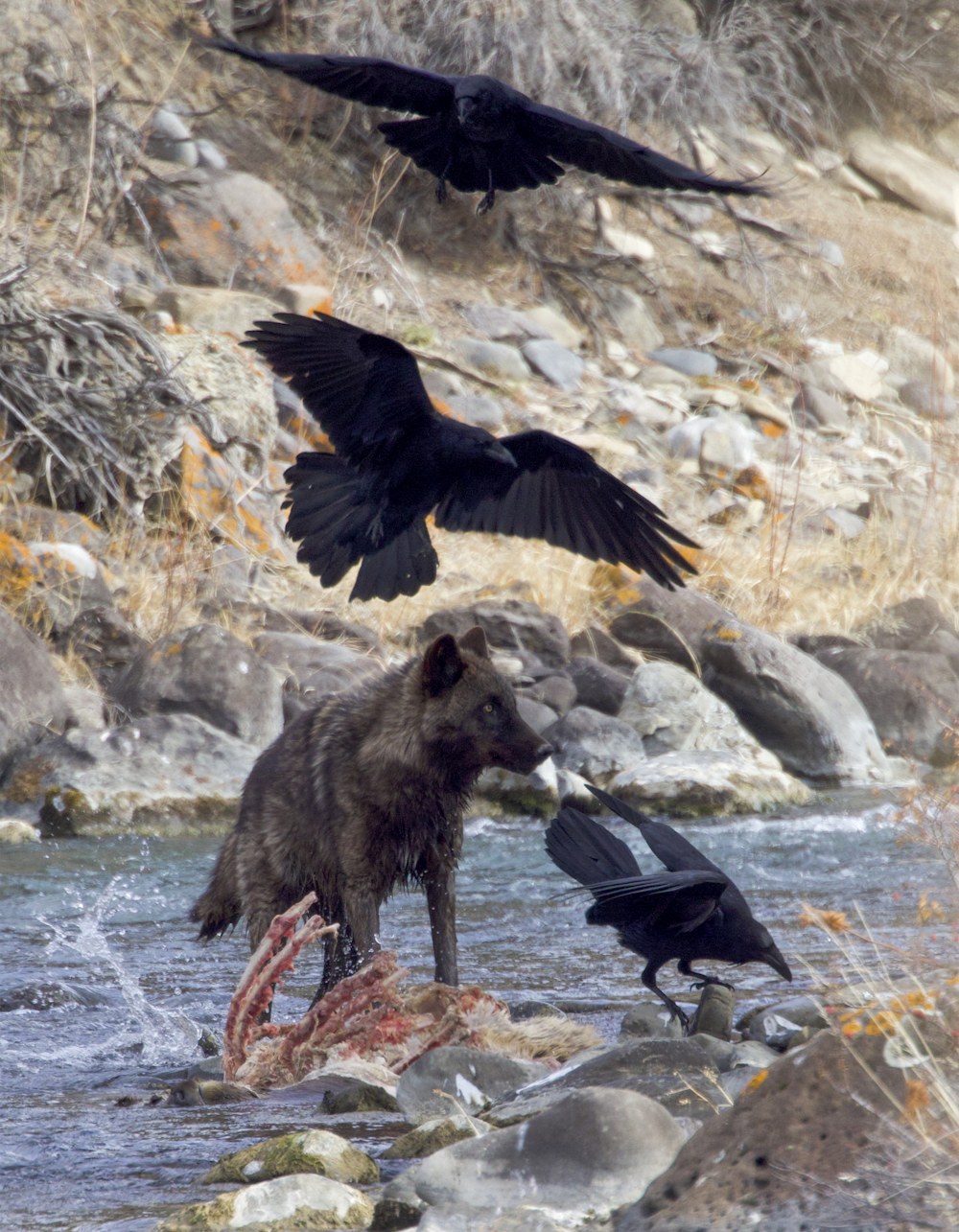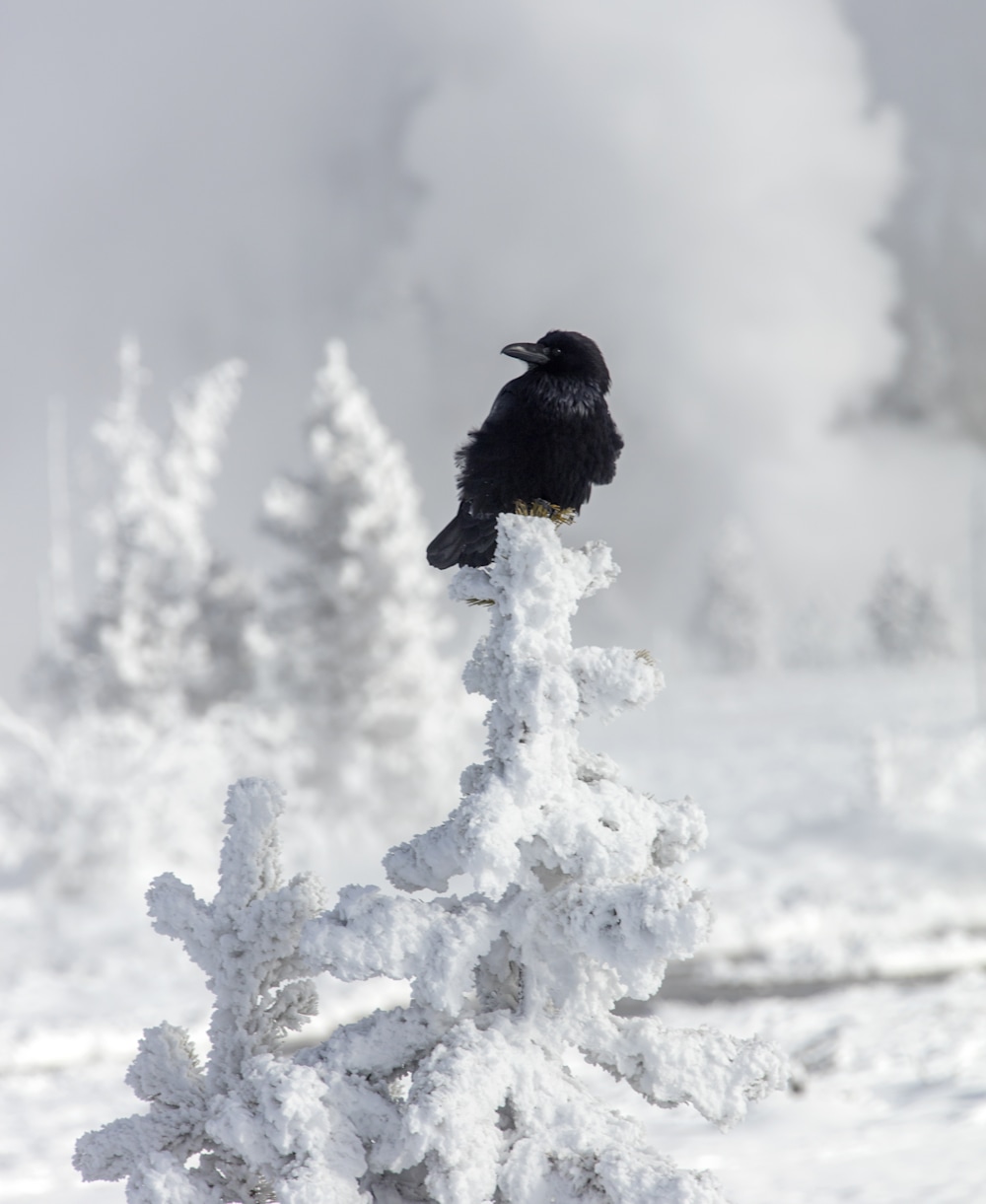Raven, Common Raven, Corvus corax: Overview, Habitat, Behavior
As a wildlife enthusiast at Robbie George Photography, I've always been fascinated by the mysterious world of ravens, known scientifically as Corvus corax. These jet-black birds, often perceived as mere scavengers, actually embody a profound intelligence that rivals even some primates. Their presence weaves through folklore and literature, casting them in roles both ominous and wise. In this blog post, we delve into the enigmatic realm of the common raven, a bird of the genus Corvus, shedding light on their extraordinary capabilities and debunking myths about their nature. Join me on a captivating exploration of these intelligent corvids, where we unravel their complex social behaviors and problem-solving abilities, challenging the conventional avian stereotypes. Let's discover the allure of these fascinating creatures together.
Ever heard the eerie call of a raven? These jet-black birds, scientifically known as Corvus corax, are more than just common scavengers. They possess an intelligence that rivals some primates and captivate with their mysterious allure. From folklore to literature, these bird creatures have held a contrasting reputation - both ominous and wise. In this post, we'll delve into the enigmatic world of the common raven, exploring its remarkable characteristics and dispelling myths surrounding its nature.
Ravens are not your average avian companions; they exhibit complex social behaviors and problem-solving abilities that challenge conventional bird stereotypes. Join us as we unravel the captivating traits and tales associated with these intelligent corvids.
Common Raven Overview
Adaptability and Habitat
The common raven, scientifically known as Corvus corax, is a large bird belonging to the corvid family. These ravens are highly adaptable and can be found in various habitats across the Northern Hemisphere. From deserts to forests, they have shown remarkable versatility in their ability to thrive in diverse environments. Their adaptability has allowed them to establish a presence in regions ranging from North America and Europe to Asia.
Ravens' intelligence has played a significant role in their successful adaptation to different habitats. For instance, they have been observed using tools for foraging, displaying problem-solving skills, and even showing social learning behaviors. This combination of adaptability and intellect has made them one of the most widespread avian species across the globe.
Physical Characteristics
Measuring around 24 to 27 inches in length with a wingspan of about 46 to 56 inches, common ravens are indeed impressive birds. They boast shiny black feathers that give off an iridescent sheen when hit by sunlight. Their thick bill features a distinctive curve on its upper edge, aiding them in various tasks such as scavenging for food or building nests.
Their formidable wings allow these birds not only graceful flight but also aerial acrobatics that demonstrate their agility and mastery of flight patterns. The physical prowess displayed by these magnificent creatures is truly awe-inspiring.
Taxonomy and Evolutionary History
Belonging to the genus Corvus within the family Corvidae, common ravens share many characteristics with other members of this taxonomic group such as crows. The scientific name "Corvus corax" reflects their classification within this esteemed avian lineage.
Ravens have an extensive evolutionary history dating back millions of years during which they've undergone significant adaptations leading up to their present form today. Fossil evidence suggests that early ancestors existed during the Miocene epoch before evolving into intelligent beings capable of thriving across varied ecosystems.
Habitat and Distribution
Natural Habitat
Common ravens, also known as Corvus corax, are found in a diverse array of habitats. They thrive in forests, mountains, deserts, and coastal areas. Their adaptability allows them to flourish in urban and rural environments alike. Ravens prefer open spaces for foraging and nesting.
Ravens have a broad habitat range across the Northern Hemisphere. They can be spotted in North America, Europe, Asia, and parts of Africa. These intelligent birds exhibit remarkable adaptability to various climates and ecosystems.
Habitat Range
The common raven's extensive habitat range spans across the Northern Hemisphere. From North America to Europe, Asia to parts of Africa, these birds demonstrate their ability to thrive in different regions with varying climates.
Ecosystem Roles
In their ecosystem roles, ravens serve as both scavengers and predators. By consuming animal remains that could otherwise spread diseases, they contribute significantly to cleaning up carrion. They play a crucial role in regulating populations of smaller animals such as small invertebrates, thereby contributing to the overall balance of their ecosystems.
Behavior and Characteristics
Intelligence and Cognition
Common ravens are incredibly intelligent birds. They have been observed solving problems and engaging in complex social interactions. In scientific studies, they have demonstrated self-awareness and the ability to use tools. This remarkable intelligence allows them to learn from their experiences and adapt their behavior accordingly.
Ravens' capacity for learning is truly impressive. Whether it's figuring out how to access hard-to-reach food sources or navigating complex social dynamics within their flock, these birds show a high level of cognitive flexibility. Their ability to problem-solve contributes to their overall success as adaptable creatures in various environments.
Their intelligence also plays a crucial role in survival, helping them thrive even in challenging conditions such as harsh winters or changing landscapes. For example, ravens have been observed using sticks or rocks not only for play but also as tools for obtaining food.
Communication Skills
Ravens possess an extensive repertoire of vocalizations that they use for communication purposes within their flock and when establishing territories. These vocalizations range from distinctive croaks and caws to various calls with specific meanings.
The diverse range of sounds produced by ravens enables them to convey different messages effectively among fellow members of the group, contributing significantly to the cohesion and organization within the flock.
Moreover, one fascinating aspect of raven communication is their ability to mimic sounds from their environment, including human speech. This talent showcases the depth of their communicative abilities beyond typical bird calls.
Playful Antics
In addition to being highly intelligent creatures with strong communication skills, common ravens are known for their playful nature. They engage in a variety of playful antics that contribute not only to individual development but also foster important skills necessary for survival within the species.
Observations have shown that ravens often partake in aerial acrobatics with each other, displaying agility while flying through intricate maneuvers—a behavior that reflects both playfulness and physical prowess.

Diet and Feeding Ecology
Dietary Habits
Common ravens, also known as corvus corax, are omnivorous birds, consuming a diverse range of food. Their diet consists of fruits, seeds, insects, small mammals, eggs, and even carrion. In urban areas, they may scavenge on garbage. These birds exhibit remarkable adaptability in their dietary habits and can adjust what they eat based on the availability of food sources.
Ravens are opportunistic feeders that take advantage of various food sources in their environment. For instance, they have been observed feeding on berries and fruits from trees or bushes while also preying upon small rodents or insects when the opportunity arises.
In addition to being scavengers and hunters for live prey like rodents or insects, common ravens have been documented to consume human-made foods such as discarded fast-food items or other types of edible waste found in urban settings.
Feeding Strategies
These intelligent birds employ different strategies depending on the type of food they encounter. Ravens use their sharp beaks to tear into the flesh for consumption. They are adept at accessing hard-to-reach parts through precision pecking.
Moreover, common ravens possess powerful beaks that enable them to crack open nuts and shells with ease. This ability allows them access to a broader range of food sources including nuts hidden inside tough outer coverings.
Another fascinating behavior exhibited by these birds is caching food for later consumption. Ravens will often hide surplus food items in various locations such as under rocks or within tree crevices—this practice serves as a reserve during times when finding immediate sustenance becomes challenging.

Breeding and Reproduction
Mating Rituals
Male ravens put on impressive flight displays to attract females during mating season. They showcase their agility and strength through aerial acrobatics, captivating potential mates. Pair bonding is established through mutual grooming and vocal exchanges between the male and female birds.
Ravens engage in intricate flight performances during mating season to woo their potential partners. These aerial acrobatics involve swooping, diving, and other mesmerizing maneuvers that highlight the male raven's physical prowess.
Pair bonding among ravens occurs as they engage in mutual grooming sessions, meticulously preening each other's feathers to strengthen their connection. Vocal exchanges play a crucial role in establishing communication between potential mates.
Nesting Habits
Ravens are known for building large, sturdy nests using twigs, grass, and various other materials. These nests are typically situated in tall trees, cliffs or even man-made structures such as buildings or bridges.
The construction of these sizable nests involves both male and female ravens contributing equally to build a secure environment for their offspring. The collaborative effort showcases the pair's commitment to creating a safe space for breeding.
Nesting sites chosen by ravens often include tall trees with strong branches or ledges on cliffs where they can construct durable homes for their young ones. In urban areas, these intelligent birds adapt to nesting on buildings or bridges if suitable natural locations are scarce.
Offspring Development
After successful mating rituals have taken place, female ravens lay 3 to 7 eggs within their carefully constructed nests. Incubation then begins lasting approximately 18 to 21 days before the eggs hatch into vulnerable chicks eagerly awaited by both parents.
Once hatched from the eggs lovingly incubated by both parents taking turns; young ravens spend about 5-6 weeks nestled within the safety of their nest before fledging - venturing out into the world beyond it.
Conservation and Human Interaction
Conservation Efforts
The common raven is not currently considered an endangered or threatened species, but it faces challenges like habitat loss and human persecution. To address this, conservation efforts focus on preserving suitable habitats and raising awareness about the importance of these birds. By protecting their natural environments, we can ensure that ravens have the resources they need to thrive.
Human activities such as deforestation and urbanization can encroach upon the habitats of common ravens, leading to a decline in their populations in certain areas. Some people view these birds as pests and may harm them intentionally. This highlights the importance of educating communities about the value of ravens in maintaining healthy ecosystems.
Conservation organizations work tirelessly to safeguard the habitats where common ravens live. By creating protected areas and implementing sustainable land management practices, they strive to create safe spaces for these intelligent birds to nest, forage, and raise their young.
Economic Impact
Common ravens play a crucial role in ecosystems by controlling pest populations and aiding in seed dispersal. Their presence contributes positively to agriculture by helping manage insect pests that can damage crops. Moreover, through seed dispersal, they contribute to plant diversity within their habitats.
However, there are instances where ravens can cause economic losses for farmers or ranchers by damaging crops or preying on livestock. In such cases, it's important for affected individuals to employ non-lethal methods for mitigating conflicts with these birds while ensuring their own livelihoods are protected.
It's essential for communities living alongside common ravens to find a balance between appreciating the ecological benefits they bring while minimizing potential negative impacts on agricultural activities.
Wildlife Viewing
Observing common ravens in their natural habitat offers wildlife enthusiasts a fascinating experience. Many nature reserves and national parks provide opportunities for people to witness these intelligent birds up close while learning more about their behavior from knowledgeable guides.
Watching ravens engage in aerial displays or listening to their distinctive calls provides insight into how they communicate with each other within social groups. This firsthand encounter fosters appreciation for their intelligence and adaptability as well as enhances understanding of their vital role within diverse ecosystems.
Cultural Significance
Mythology and Folklore
Ravens, also known as common ravens or Corvus corax, hold significant cultural importance in mythology and folklore. Across different cultures, they are often associated with wisdom, magic, or as messengers of the gods. For example, in Norse mythology, Odin had two ravens named Huginn and Muninn who brought him information from the world. Similarly, in Native American legends, ravens are seen as clever tricksters.
In various traditions around the world, stories featuring ravens can be found. They play a role in shaping beliefs and have become symbols of intelligence and mystery due to their behavior and appearance. These tales have been passed down through generations and continue to influence cultural perceptions of these birds.
Symbolism in Art
Throughout history, artists have depicted ravens as symbols of mystery, intelligence, or even death. Their black feathers and distinctive silhouette make them a captivating subject for artistic expression. In paintings, sculptures, literature, and other forms of artistry across different time periods and regions worldwide.
Artists utilize the enigmatic nature of these birds to evoke a sense of intrigue within their work. The raven's presence adds depth to artistic pieces by symbolizing various themes such as wisdom or foreboding omens.
Life Cycle and Longevity
Development Stages
The common raven goes through various development stages from hatching to adulthood. They start as helpless hatchlings, relying on their parents for food and protection. As they grow, young ravens develop their flying skills and gradually become independent.
During the early stages of life, ravens are entirely dependent on their parents for survival. They require constant care and feeding until they are old enough to fend for themselves. This period is crucial for their growth and learning essential skills such as hunting, flying, and social interactions within the raven community.
Lifespan Factors
The lifespan of common ravens can vary depending on factors such as habitat quality and predation risks. In the wild, they typically live around 10 to 15 years, although some individuals have been known to reach 20 years or more. Captive ravens may have longer lifespans due to reduced exposure to environmental threats.
The quality of the environment plays a significant role in determining the longevity of common ravens. Access to abundant food sources, suitable nesting sites, and minimal disturbance from human activities can contribute to an extended lifespan for these intelligent birds.
Challenges and Conservation Status
Threats to Survival
The common raven faces localized threats stemming from human activities and persecution. Urbanization and deforestation diminish suitable nesting sites and foraging areas, impacting local raven populations. Illegal hunting or poisoning can pose risks to ravens in certain regions.
These activities can significantly impact the common raven's ability to find suitable habitats for nesting and food sources. For example, when forests are cleared for urban development or agriculture, the trees where ravens typically nest may be destroyed, leading to a decline in their population.
Illegal hunting or poisoning also presents a threat to the common raven's survival in specific areas. For instance, if farmers use poisoned bait intended for other animals like foxes or wolves, it could inadvertently harm ravens that scavenge on these carcasses.
Status and Trends
The International Union for Conservation of Nature (IUCN) has classified the common raven as a species of "Least Concern." This designation indicates that while there are potential threats to certain populations of common ravens due to habitat destruction and persecution, overall they are not at immediate risk of extinction.
Despite being listed as "Least Concern," it is crucial to recognize that conservation efforts remain vital for ensuring the long-term survival of this remarkable bird species. Continued monitoring is essential because even though they are currently stable across their range with some regional variations in population trends, this status could change over time due to various factors such as climate change or new human developments encroaching on their habitats.
Final Remarks
You've now got a good grasp of the common raven, from its behaviors and characteristics to its conservation status. These majestic birds play a crucial role in the ecosystem, and understanding their habits can help us protect their populations. Whether it's spreading awareness about their conservation status or making small changes in your community to support their habitat, every action counts.
As we conclude our exploration of the common raven at Robbie George Photography, it's clear that these remarkable birds are more than just a feature of our landscapes or subjects of age-old tales. They are intelligent, adaptable, and deeply woven into the tapestry of our natural world. I hope this journey into the life of Corvus corax has not only enlightened but also inspired you to appreciate the intricate complexity of these majestic birds. Stay tuned for more insightful wildlife stories and stunning photography that bring the wonders of nature right to your screen. Remember, in the world of wildlife photography, every snapshot tells a story, and every creature, no matter how enigmatic, has its unique place in the natural order.
So, go out there and share what you've learned. Educate others about the importance of preserving the habitats of these incredible creatures. Small steps can lead to big changes in ensuring a thriving future for the common raven population.

Frequently Asked Questions
What is the common raven's habitat?
The common raven, also known as Corvus corax, inhabits a wide range of environments including mountains, deserts, forests, and coastal cliffs. They are highly adaptable birds and can thrive in diverse landscapes.
How does the common raven contribute to its ecosystem?
Common ravens play a crucial role in their ecosystem by scavenging carrion and controlling populations of small mammals. Their foraging behavior helps maintain ecological balance and nutrient cycling within their habitats.
Are there any cultural significances associated with the common raven?
Yes, many cultures have revered the common raven for its intelligence and symbolism. In various mythologies and folklore, these birds often represent wisdom or act as messengers between the human world and the divine realm.
What are some challenges faced by the common raven in terms of conservation status?
Although not currently considered at risk globally, certain local populations of ravens face threats from habitat loss, persecution due to conflicts with humans or livestock farming practices. Conservation efforts aim to address these localized issues.
How long do common ravens typically live?
In the wild, common ravens have an average lifespan of 10-15 years. However, they can live much longer in captivity - sometimes up to 40 years! Their longevity allows them to accumulate extensive knowledge about their environment over time.





